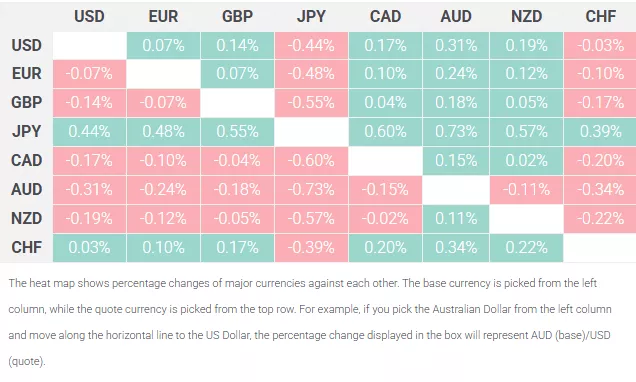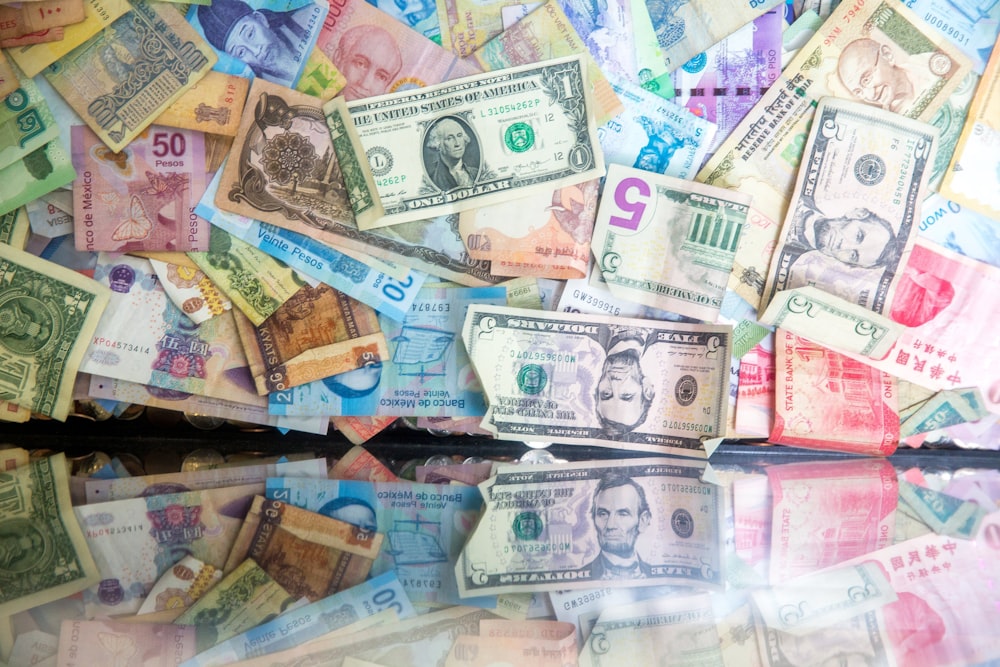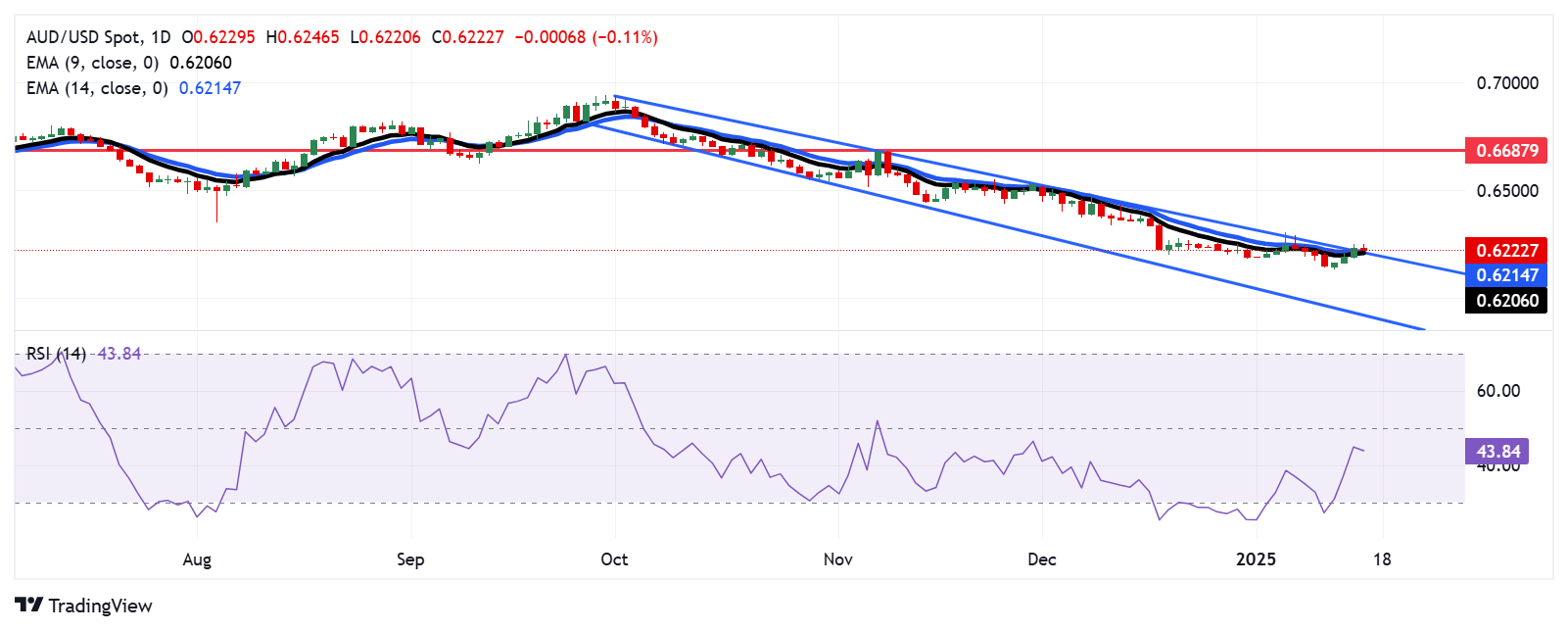Australian Dollar Faces Challenges As Unemployment Rate Rises In December
Image Source: Unsplash
- The Australian Dollar depreciates as the Unemployment Rate rises to 4.0% in December.
- Australia’s Employment increased by 56.3K in December, up from 28.2K in November.
- The US Dollar weakened after the softer US Consumer Price Index for December was released on Wednesday.
The Australian Dollar (AUD) broke its three-day winning streak against the US Dollar (USD) following the Australian Employment report released on Thursday. According to the Australian Bureau of Statistics (ABS), the seasonally adjusted Unemployment Rate rose to 4.0% in December, compared to 3.9% in November, aligning with market expectations.
Australia's Employment increased by 56.3K in December, up from 28.2K in November (revised from 35.6K) and significantly exceeding the market forecast of 15.0K.
Bjorn Jarvis, head of labor statistics at the ABS, highlighted key data points: "The employment-to-population ratio rose 0.1% percentage points to a new record of 64.5%. This was 0.5 percentage points higher than a year ago and 2.3 percentage points above pre-COVID-19 levels. The increase in both employment and unemployment led to a further rise in the participation rate, which reflects the proportion of the population either employed or actively seeking work."
US President-elect Donald Trump's economic team considered a gradual increase in import tariffs. This optimism has bolstered risk-on market sentiment and supported risk-sensitive currencies like the AUD and contributed to the appreciation of the AUD/JPY pair.
Australian Dollar appreciates as US Dollar depreciates following CPI Inflation
- The US Dollar Index (DXY), which measures the US Dollar’s performance against six major currencies, trades near 109.00. The Greenback extends its downside following the cooler-than-expected US Consumer Price Index (CPI) inflation data for December raises the bet that the US Federal Reserve (Fed) could cut interest rates twice this year.
- The US Consumer Price Index increased by 2.9% year-over-year in December, up from 2.7% in November, aligning with market expectations. On a monthly basis, CPI rose 0.4%, following a 0.3% increase in the previous month.
- US Core CPI, which excludes volatile food and energy prices, rose 3.2% annually in December, slightly below November's figure and analysts' forecast of 3.3%. On a monthly basis, core CPI edged up 0.2% in December 2024.
- US Producer Price Index for final demand rose 0.2% MoM in December after an unrevised 0.4% advance in November, softer than the 0.3% expected. The PPI climbed 3.3% YoY in December, the most since February 2023, after increasing 3.0% in November. This reading came in below the consensus of 3.4%.
- On Wednesday, Scott Bessent, Donald Trump’s nominee for Treasury Secretary, emphasized the importance of maintaining the US Dollar as the world’s reserve currency for the nation's economic stability and future prosperity. Bessent stated “Productive investment that grows the economy must be prioritized over wasteful spending that drives inflation,” per Bloomberg.
- The Federal Reserve reported in its latest Beige Book survey, released on Wednesday, that economic activity saw slight to moderate growth across the twelve Federal Reserve Districts in late November and December. Consumer spending increased moderately, driven by strong holiday sales that surpassed expectations. However, manufacturing activity experienced a slight decline overall, as some manufacturers stockpiled inventories in anticipation of higher tariffs.
- Federal Reserve Board of Governors member Michelle Bowman added her voice to a chorus of Fed speakers last week as policymakers work double-duty to try and smooth over market reactions to a much tighter pace of rate cuts in 2025 than many market participants had previously anticipated.
- Australia’s Westpac Consumer Confidence Index dropped by 0.7% to 92.1 points, reflecting ongoing consumer pessimism. The decline in consumer confidence sparked concerns about the outlook for interest rates and Australia’s broader economic health. Markets are now pricing in a 67% likelihood that the Reserve Bank of Australia will lower its 4.35% cash rate by 25 basis points in February, with a full rate cut expected by April.
- On Monday, the China Foreign Exchange Committee (CFXC) pledged to support the Chinese Yuan during a meeting in Beijing, held under the guidance of the People’s Bank of China (PBOC). Separately, the PBOC and the State Administration of Foreign Exchange (SAFE), China’s FX regulator, announced an increase in the macro-prudential adjustment parameter for cross-border financing from 1.5 to 1.75, effective January 13, 2025.
- People's Bank of China (PBOC) Governor Pan Gongsheng stated on Monday that "interest rate and reserve requirement ratio (RRR) tools will be utilized to maintain ample liquidity." Gongsheng reaffirmed China's plans to increase the fiscal deficit and emphasized that China will continue to be a driving force for the global economy.
Technical Analysis: Australian Dollar could test the 0.6200 support near 14-day EMA
The AUD/USD pair trades around 0.6220 on Thursday, testing to break above the descending channel on the daily chart. A successful break would weaken the bearish bias. The 14-day Relative Strength Index (RSI) rises toward the 50 level, indicating a recovery.
The AUD/USD pair faces immediate resistance at the upper boundary of the descending channel, around 0.6220.
Regarding its support, the AUD/USD pair may test the 14-day Exponential Moving Average (EMA) at 0.6214, followed by the nine-day EMA at 0.6206. A more significant support level lies near the lower boundary of the descending channel, close to the 0.5920 level.
AUD/USD: Daily Chart
Australian Dollar PRICE Today
The table below shows the percentage change of Australian Dollar (AUD) against listed major currencies today. Australian Dollar was the weakest against the Japanese Yen.

More By This Author:
GBP/USD Rises Above 1.2200 As Trump's Team Considers A Gradual Increase In TariffsEUR/GBP Climbs Above 0.8400 Amid Growing Concerns About Stagflation In The United Kingdom
GBP/JPY Price Analysis: Falls Below 191.00 Toward Ascending Channel’s Lower Boundary
Information on these pages contains forward-looking statements that involve risks and uncertainties. Markets and instruments profiled on this page are for informational purposes only and should not ...
more




